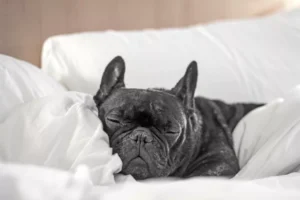
Kneading, or “making biscuits,” is an instinctual behavior seen among kittens that persists into adulthood. Cats will frequently knead soft household items like pillows and blankets or preferentially rub against human companions’ chest, stomach area and arms and legs – this may indicate their affection or emotional attachment; many pet companions see kneading as an expression of affection or emotional bonding that reminds them of mother cats’ instinctual interaction with their kittens.
Nearly 58 million cats live in American households1, and having a close and loving relationship with one is beneficial for both the human and feline involved. While cat behavior may seem perplexing to humans (it hasn’t been extensively researched and documented like dog behavior has), cats often are misinterpreted as independent beings that operate within rigid social structures; their real behavior lies within more flexible structures that encompass communal living as well as strong independence depending on life experiences and environment factors.2
Studies of cat behavior demonstrate how strongly they form attachments to their human caregivers. One study reported 65% of cats developed secure bonds with their human caregivers – an impressive figure comparable to studies done with dogs and human infants. Kneading may be one particular behavior cats use to show or reinforce this bond with “their” people.3
Kneading in Cats
Kneading is the rhythmic movement of a cat’s front paws wherein they alternately flex and press their toes and pads against a soft object, similar to what bakers use when kneading bread; hence its common moniker as “making biscuits”. Kneading may also be known by other names such as “making muffins” or “happy paws”.
Many cats purr while kneading and may appear intensely focused on the task. Some cats may rhythmically kick their back feet or twitch their pelvis while kneading. Cats knead either with or without using their claws inserted into an object before retracting them – purring in between each stroke is often heard!
Cats often enjoy kneading soft objects such as blankets or soft toys, although this behaviour doesn’t indicate any clear preference; cats will usually opt for stomach, chest or leg areas of people they live with as targets; in addition, cats may knead other household animals like other cats and dogs in addition to themselves.
Why Do Cats Knead? There are multiple hypotheses about why cats knead, and it could serve different functions depending on their life stages, environment and context.4
Kneading is one of the first behaviors newborn kittens exhibit upon being born. Newborns will knead on their mother’s abdomen to induce milk letdown so they can nurse. In domestic cats, this early behavior established during kittenhood may carry over into cat-human caregiver relationships as cats recognize a type of familial bond with all caregivers (even non-felines!).
Kneading may also help cats feel secure and content in their environments. Cats may knead as an anxiety-reducer when stressed or anxious; or to relieve themselves when stressed.5
Kneading may also help cats mark their scent. Cats have scent glands in their paws which produce chemicals called pheromones to mark their territory and communicate with other animals; when performing behaviors like scratching trees and posts they leave scent markers behind. Humans cannot detect these pheromones; only other cats can detect them.4
Kneading may also be used for purposes other than territorial marking in domestic cats; its roots lie with wild cats’ bedding down or nesting behavior. Wild cats used it to pat down grass and leaves into a comfortable bed before napping; today’s domestic cats may still perform this action before relaxing for a nap.
Kneading can play an invaluable role in keeping a cat’s claws, feet, and paw pads healthy by stretching and flexing them; much like people do to maintain physical fitness through regular stretching exercises.
Unspayed female cats will lie down and knead when entering heat, signaling they’re entering an optimal period for breeding.
Kneading Is Normal
Kneading is an instinctual behavior in cats that contributes to their overall health and happiness; therefore, it should not cause concern. When cats knead someone they feel comfortable around such interactions can provide both parties with an enjoyable bonding experience while showing that the cat feels safe around that individual.
Kneading cats can damage items like sweaters, pillows and blankets by pulling on threads with their claws. When this happens, never punish or abruptly stop their kneading; rather redirect their attention by slowly inserting a new item under their paws while taking away another. You could also slowly and gently move their body onto another blanket or toy to redirect their attention elsewhere. Finally, set aside one specific blanket or towel specifically for their use when they knead, while placing away other potentially damaged items when not being used.
Cats using their claws to knead can cause discomfort to those being kneaded, yet this action should never be punished as the cat does not intend for this action to be harmful. A thick blanket or other soft item between your skin and the cat may provide added protection from discomfort or scratches when your cat kneads you; keeping nails trimmed regularly or using plastic nail caps are other measures which may prevent discomfort or injury from this action.
Rarely, cats may suddenly change their kneading behavior without warning. Meowing in unusual ways during kneading or acting aggressive toward people or other cats in the house, or showing any aggressive tendencies could indicate medical or behavioral problems in your cat. If their behavior suddenly alters abruptly, consult your veterinarian as soon as possible to make sure there’s no physical issue that needs treating immediately; additionally they will provide guidance regarding any concerning behavioral changes your feline friend is showing.





